Deciding what to buy when choosing your first telescope is a tricky task, but perhaps even more difficult is deciding what 'scope would make a decent upgrade. Once you've decided that practical astronomy is definitely for you, it may be worth investing in a more powerful piece of kit.
Below is our pick of some of the telescopes we've reviewed in the past that would make a fine upgrade, whether you're looking for something that's excellent value, or feel like splashing out on more high-end equipment.
And if you don't see what you're looking for below, visit our astronomy equipment review archive for our thoughts on an array of telescopes, binoculars, cameras, mounts and accessories.
11 telescopes that would make a good upgrade
1
Sky-Watcher EVOSTAR-72ED DS-PRO (£269)
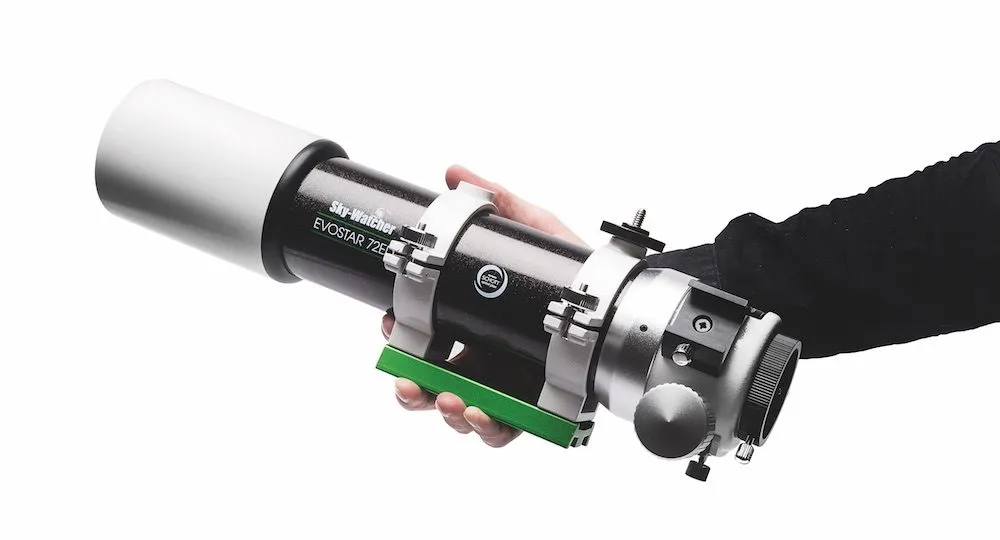
Small apo class refractors used to be quite heavy for their size but small scopes from Sky-Watcher and other manufacturers have brought the weight down. This scope's tube weighs just 1,955g.
It’s only 42cm long, so it’s a very short tube system, and the dew shield is removable, adding up to a great get-up-and-go telescope, perfect for taking on holiday for viewing and imaging. The whole system is quick and easy to set up: a great incentive to invest.
Read our full review of the Sky-Watcher EVOSTAR-72ED
2
Omegon Pro ProDob N 203/1200 8-inch Dobsonian
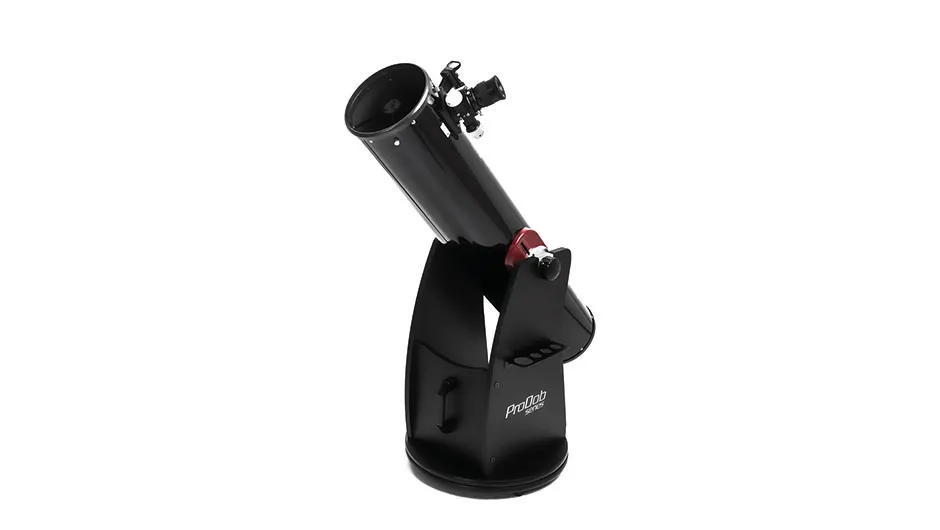
Assembly is intuitive and straightforward, and once collimated this scope holds alignment quite well. A 32mm super wide angle eyepiece, mirror-cooling fan, battery box and red dot finder complete the system. Remove the tube’s front cover, switch on the finder, drop in an eyepiece and you’re ready to observe.
We were impressed with great optics and friction control on the altitude and azimuth axes. This would be great for experienced astronomers who want a simple scope to reconnect with the skies.
Read our full review of the Omegon Pro ProDob N 203/1200
3
Bresser Messier 8-inch Dobsonian
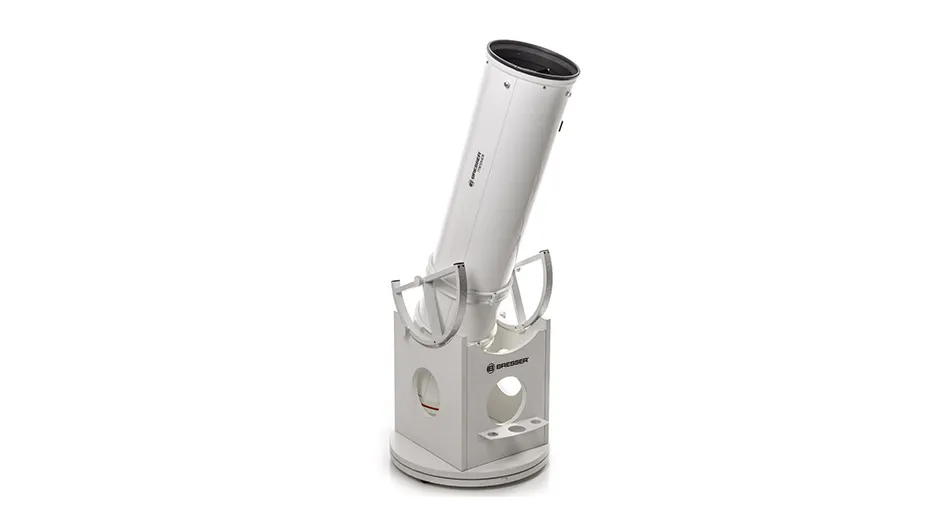
This scope comes with a red dot finder, 25mm Plössl eyepiece, extension tube for the focuser and an eyepiece rack. Bresser have used furniture style fittings, allowing you to build the base quickly. The rocker is lightweight and convenient for taking to a remote site.
Tube rings hold the telescope, to which altitude wheels can be attached for Dobsonian usage. Or the wheels can be removed and a Vixen dovetail bar attached in place of one or both. This enables you to mount it onto an equatorial mount, allowing you to track the night sky and use the scope for long-exposure astrophotography.
Read our full review of the Bresser Messier 8-inch
4
Bresser Messier NT-150S/750 reflector
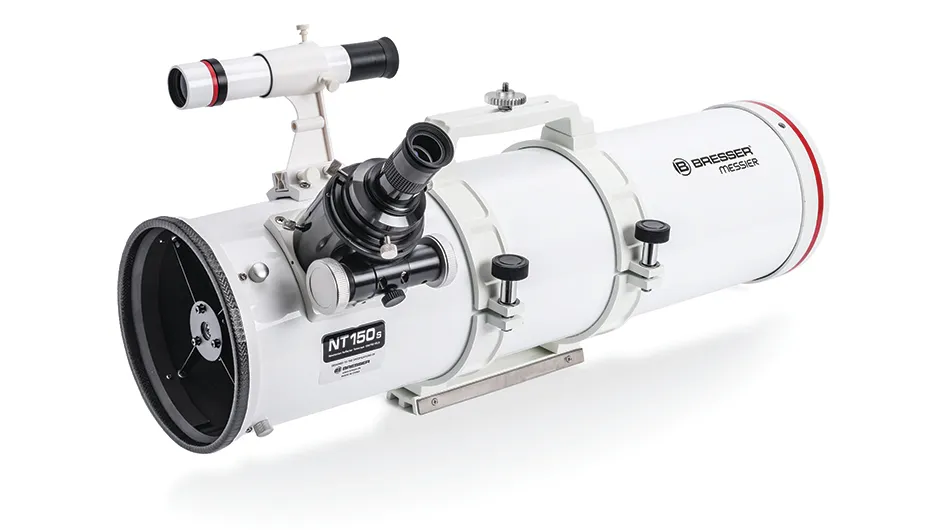
This scope comes with a 6×30 finderscope, focuser extension tube, piggyback camera attachment, 2- to 1.25-inch adaptor for the focuser and a 26mm Super Plössl eyepiece. Collimation was relatively easy as the rear of the telescope has good-sized collimation knobs and easy to access adjustment screws. For more on this, read our guide on how to collimate a Newtonian telescope.
Deep-sky targets looked great, with a good deal of nebulosity when we viewed the Orion Nebula through the supplied 26mm eyepiece. The Messier NT-150S and its accessories weigh in at just 5.5kg, so it is lightweight and easy for most people to handle.
Read our full review of the Bresser Messier NT-150S/750
5
Starwave Travel 70 EDT-R apo refractor (£599)
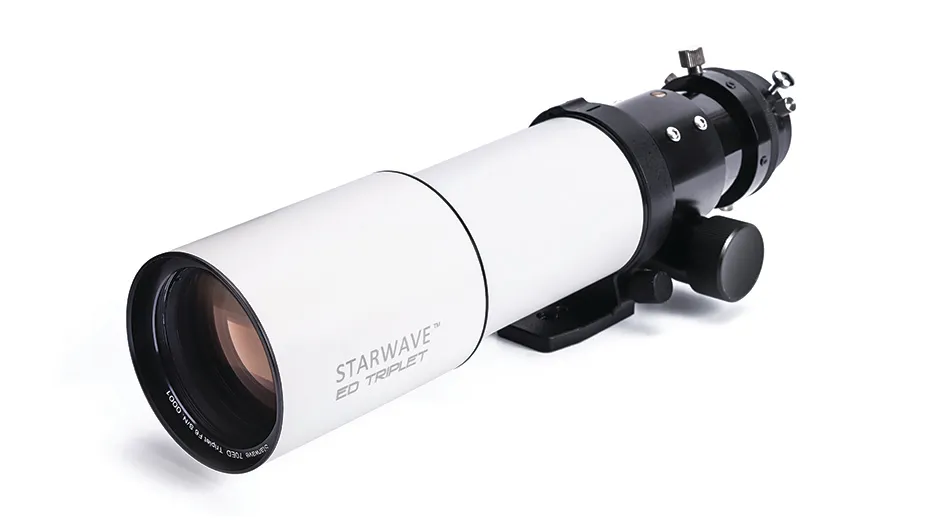
This refractor is a cost-effective travel option, as it is supplied in a soft, well-padded case with compartments for accessories. A doublet design helps correct any colour fringing around bright stars.
The dew shield performs its job, while the back section of the scope can be rotated 360º, which gives you more flexibility when framing targets for imaging. It is also light at just 2kg, and its case will likely fit within most airline luggage restrictions.
Read our full review of the StarWave Travel 70
6
Orion Optics VX8 Newtonian reflector
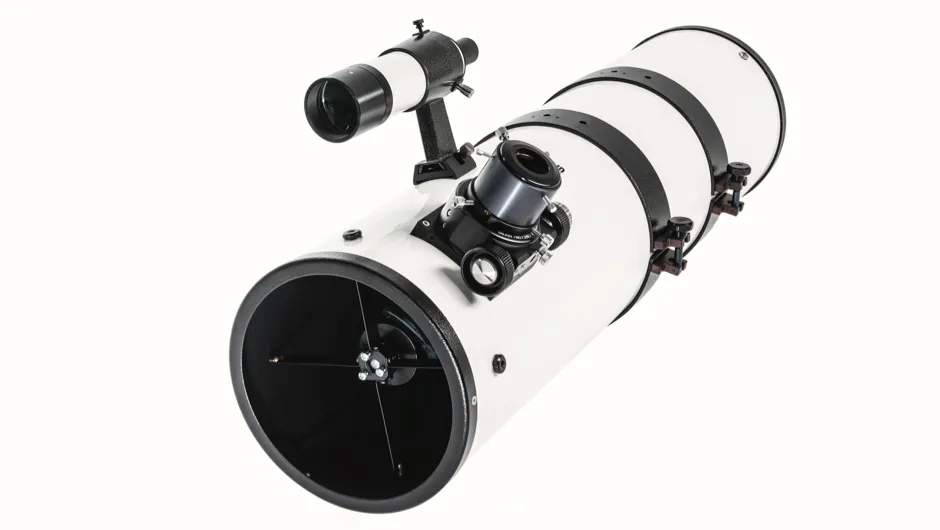
The VX8 is a lightweight system, and without accessories weighs just 7kg. It comes with a straight-through 8×50 finderscope, ACU-2S 2-inch Crayford focuser with a 1.25- to 2-inch adaptor.
The primary mirror is supported by a nine-point cell with easy collimation and, after a few simple adjustments, we quickly had Altair pin sharp across 80% of the view. At the edges there was a little coma, but this is to be expected in ‘fast’ systems with shorter focal lengths.
Read our full review of the Orion Optics VX8 Newtonian
7
William Optics Star 71 five-element apo refractor

William Optics’ Star 71 comes in a package comprising an optical tube, tube rings with a Vixen dovetail bar, 2.5-inch dual-speed rack and pinion focuser with built-in thermometer, front and rear metal covers and an M48-Canon EOS adaptor ring. It is first and foremost an imaging instrument.
We attached our Canon EOS 50D DSLR and set on an NEQ6 Go-To mount, giving us the ability to capture exposures of up to 4 minutes without guiding. This is a compact imaging telescope that gives sharp stars out to the field edges and good colour correction. We'd recommend it to anyone interested in wide-field imaging.
Read our full review of the William Optics Star 71
8
Celestron NexStar Evolution 8
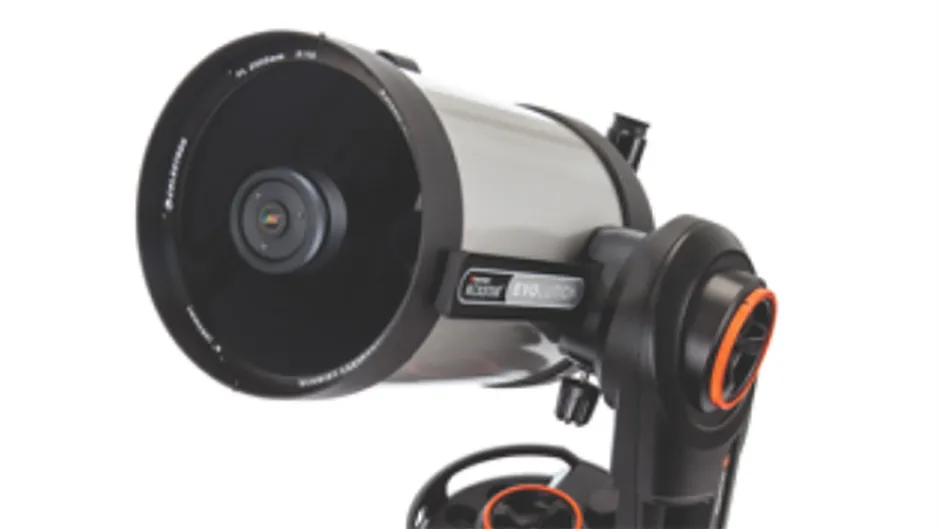
Evolution 8 is an 8-inch Schmidt-Cassegrain telescope on a computerised single fork arm. The altaz mount is on a stainless steel tripod and comes with a star diagonal, red-dot finderscope, 40mm and 13mm eyepieces and a mains power cable. The mount’s single arm includes an integrated lithium-ion phosphate battery. When charged up you don't need an external powerpack.
The mount also works with the power cable connected. It comes with a built-in Wi-Fi network so you can control it with your smartphone or tablet. Optics are Fastar compatible, so the secondary mirror can be replaced with a Fastar/HyperStar unit onto which a CCD camera can be mounted. This speeds up the scope’s focal ratio by a factor of five to f/2 – especially useful for deep-sky imaging.
Read our full review of the Celestron NexStar Evolution 8
9
Meade LX65 8-inch ACF telescope and mount

This scope comes with stainless steel tripod, 26mm eyepiece, red dot finder, star diagonal, bubble level with compass and planetarium software. The tube is a Meade ACF catadioptric with a diameter of 8 inches and a focal length of 2,032mm giving a focal ratio of f/10.
It is ideal for high-resolution planetary and lunar viewing or imaging yet still gives good views of a wide range of deep-sky targets, especially double stars.
Read our full review of the LX65
10
Vixen A105MII achromatic refractor

Our time spent testing the Vixen A105MII was certainly rewarding. We found it coped well with our selected targets and, although it's more designed for visual observing, it can take a reasonable astro image.
Given its size and weight, the A105MII probably wouldn't be a go-to choice for newcomers to astronomy, but for an intermediate astronomer the A105MII optics perform well.
We found it gave crisp and well-contrasted views and has an impressive build quality: not a piece of plastic in sight.
Read our full Vixen A105MII achromatic refractor review.
11
Altair Wave Series 130EDT-F F7

Large refractors like the The Altair Wave Series 130EDT-F triplet always look the part. They look like a proper, quality telescope.
The 130EDT-F is certainly impressive, the quality and build being exceptional.
While skies weren’t really dark enough for deep-sky objects during our testing, M13 was visible with reasonable contrast and good distinction between stars.
We even managed to observe both galaxy cores from M51, the Whirlpool Galaxy, thanks to the telescope’s 130mm lens.
The 130EDT-F is an all-round, high-quality large refractor, providing excellent views and images comparable to more expensive telescopes.
